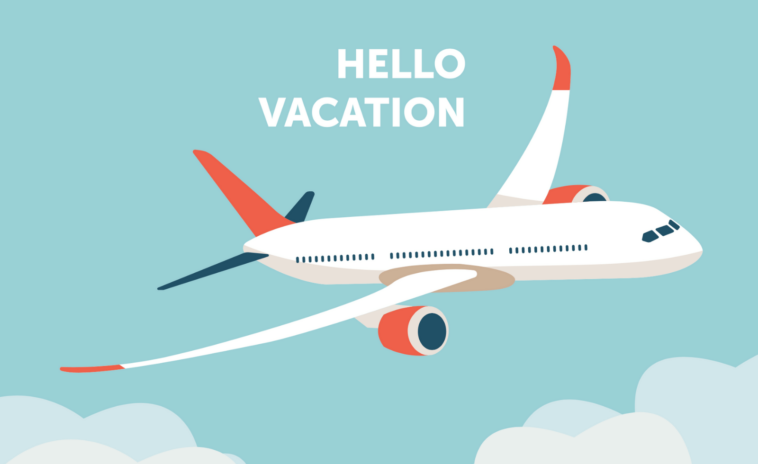When you book a vacation, it’s tempting to load your days with excursions to make the most of your trip. You want to get that perfect shot for IG in front of a scenic hotspot, after all. But that approach doesn’t allow for slow travel – a travel mindset that favors a more mindful experience instead of a mainstream whirlwind of activities.
“Slow travel is such a unique and rewarding experience because it allows you to really take in what you are witnessing during your trips. It helps you to appreciate the culture that surrounds you, as well as the food and less popularized places,” adds Giulia Di Leo, a travel expert and an executive in the leisure travel industry with Your Boat Holiday.
What is Slow Travel?
Have you heard of the slow food movement? It’s about nurturing local culinary traditions, learning about the food you eat and caring about where it comes from, and prioritizing high-quality locally sourced ingredients.
Slow travel is similar – it’s not so much about speed, though taking more time to visit places does help in terms of getting to know a location, its culture and its people beyond tourist attractions. An all-inclusive resort or a fast-and-furious trip just to check a destination off your bucket list? In the world of slow travel, that would be the equivalent of eating a Big Mac.
The Benefits of Slow Travel
Embracing slow travel comes with many benefits. You may not cure your FOMO by cramming as much sightseeing as possible in one day, but you may come back home feeling like you had a richer, more rewarding experience.
“One of the benefits of slow travel is gaining an open mind about customs and a way of life that’s unfamiliar. When I did slow travel in Tokyo, I was able to experience life in a major metropolitan while also learning about old traditions that are carried through hundreds of years just by having the privilege of listening to family stories, personal anecdotes, and lessons from my sensei that taught me Japanese,” says Jonathan Cohen co-owner of Travelling With Abundance.
“With this style of travel, you can get to experience a different way of life and not just tourism. As a slow traveler, I learn about grocery shopping, work culture, local foods, and a lot more by going through day-to-day life in another country,” says Janelle “Jash” Cooper, digital nomad and founder of Joyriding With Jash. “This allows me to get a fully immersive experience. I’m practicing the language, making connections with people, becoming a regular at local restaurants, and truly getting outside of my comfort zone.”
Not to mention the fact that slow travel can help you save a few bucks. “When you are traveling slowly, you aren’t spending large amounts of money on tourist attractions, and you tend to stay in less populated areas, which are cheaper,” according to Di Leo.
Slow Travel Tips Anyone Can Embrace
Ready to try slow travel? Here are some tips to embrace – even if you’re only going somewhere for a short period of time.
1. Talk To Locals
“One major tip to integrating slow travel into any vacation is making the brave step of striking up a conversation with locals,” according to Cohen. Build rapport, and if you’re bold enough, kindly ask if you could join a local event of some sort, from a holiday celebration to dinner with a family.
“The act of asking to be involved in some way, shape or form is deeply respectful as it shows you’re more than just curious about learning their culture. You want to experience it, learn, adapt, and show your respect,” he says. This may feel uncomfortable, but asking politely is usually well-received. “It truly communicates that you want to immerse yourself in a new culture, and, from my experience, locals are thrilled to be able to offer guidance towards tourists who politely ask to be a part of an occasion.”
2. Travel Off-Season
One of the best ways to take a page from the slow travel book is to travel during the off-season. There will be fewer tourists and more opportunities to take in the authentic daily life that takes place in the destination of your choice. Also – fewer crowds, more savings.
3. Be Open-Minded
Your mindset is very important when it comes to slow travel. Open-mindedness is key. “It is very easy to look at the way things are done in other countries as wrong or weird, but just because something is different doesn’t mean it’s wrong,” says Cooper. “While slow traveling, you will be getting an inside like of another way of life. Remaining open-minded about doing things differently and learning new things is essential to really experience and connecting with the culture.”
In order for that to happen though, it’s important to leave your expectations at home. “I have done this type of travel in the past, and it makes it so much more rewarding and exciting when you don’t have expectations of how it should go,” says Di Leo. “You also tend to relax more and slow travel becomes almost second nature to you.” In other words, go with the flow.
4. Keep Plans Open
Speaking of which, Di Leo recommends ditching that list of things to do. Even if you must plan out part of your itinerary, leaving a few days open is a good way to start embracing slow travel. “Although you might have to plan out some details, it helps to leave some days open so you can just explore the area you are in and get to know the culture on your own terms,” she says.
Get off the beaten path
Finally, getting off the beaten path is a core principle of slow travel. “Skip the touristy areas and go where the locals are to really experience the culture. Instead of using an international tour agency, book a local guide or Airbnb experience hosted by a local,” suggests Cooper.
From wandering off to a residential area and finding a hole-in-the-wall restaurant with delicious food to making new friendships, you’ll get the opportunity to stumble upon plenty of magic that way. “My week-long trip to Haiti in 2018 resulted in numerous friendships and even led to me moving to the country to teach in 2021. You can get some of the slow travel experience even when you’re in a time crunch,” adds Cooper.



